 A TRIGLYCERIDE |
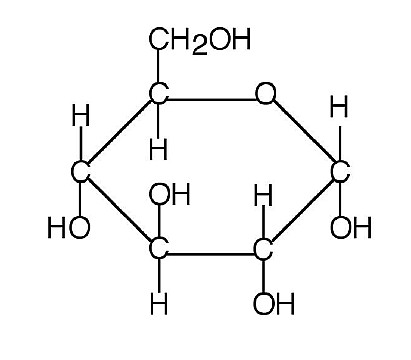 GLUCOSE |
|
What 4 substances are in all 3 lipoproteins? Watch the following Video Clip to answer this one. |
|
Continue
filling out your lecture outline for Chapter 5 for
the following:
III Lipoproteins
II Where do lipids
come from?Plants make triglycerides and phospholipids from fragments of glucose. Plants make sterols, but do NOT make cholesterol because they don't need cholesterol. They need sterols, just not cholesterol. Animals make triglycerides from fragments of carbohydrates, proteins or fats. Animals can make cholesterol from saturated fatty acids, and carbohydrates. Humans make all of the fatty acids they need except 2 called the EFAs (essential fatty acids). Can you remember from the first part of this lecture which of the following are considered EFAS? Click here if Linoleic is an EFA. Click here if Linolenic is and EFA. Click here if
EPA and DHA are EFAs. |
 A TRIGLYCERIDE |
 GLUCOSE |
|
What 4 substances are in all 3 lipoproteins? Watch the following Video Clip to answer this one. |
| Video Clip:
Lipoproteins approximately 6 minutes Lipoproteins video Beth says that lipoproteins are made to transport fat through watery blood and lymph, but it is really more correct to say lipoproteins transport lipids, because lipoproteins not only transport fat (triglycerides), but also cholesterol. The illustration of a lipoprotein below shows both triglycerides and cholesterol in the middle of the lipoprotein surrounded by the phospholipids which are acting as emulsifiers, and protein which stabilizes the structure and also identifies receptors on cell membranes to help navigate the lipoprotein.
LDL carries cholesterol from the liver to cells, and can contribute to plaque buildup in arterial walls which is why it is often referred to as "bad" cholesterol. HDL carries cholesterol from cells to the liver for disposal, which is why it is often referred to as "good" cholesterol. The TRUTH is that there is no such thing as "good" or "bad" cholesterol. There is only one type of cholesterol in both foods and in the body. It is whether cholesterol is associated with LDL or HDL that makes it "good" or "bad". Also you do not find LDL or HDL in foods, but the foods you eat can impact their levels. Can you remember which fats increase LDL levels? Click here if you think it is saturated and trans fat. Click here if you think it is unsaturated fat. |
|
| Video Clip: Lipids and
Heart Health approximately 5 minutes Lipids and Heart Health video |
Saturated fat in the diet usually has a bigger effect
on someone's risk of heart disease than does the actual
cholesterol in the diet, because when you take in more
dietary cholesterol the body synthesizes less. The saturated
fat is used by the body to make cholesterol, and it also
impacts increasing LDL levles which can contribute plaque
along artery walls and obstruct blood flow. 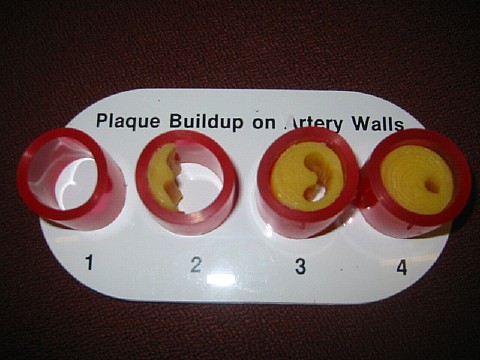 Something that can contribute to the obstruction is damage to the lining of the blood vessels, which can happen due to a variety of reasons, including smoking. When the lining of the heart artery is damaged, small blood particles called platelets accumulate causing reduced blood flow and a heart attack. 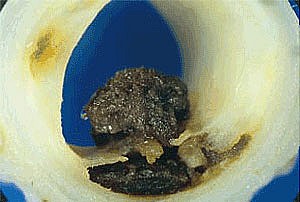 |
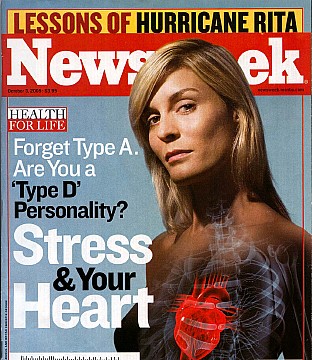 |
The Harvard Mental Health Letter says that people with a set of traits known as the Type D (“distressed”) personality suffer from a high degree of emotional distress, but they consciously suppress their feelings. |
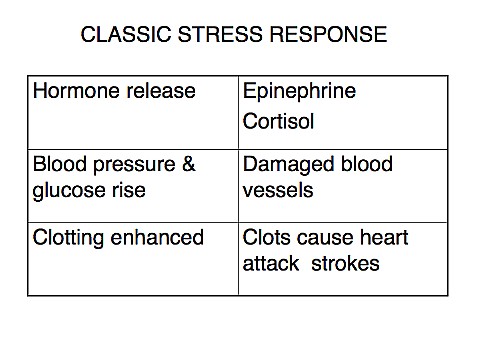 |
Correct Linoleic and Linolenic fatty acids are considered essential fatty acids (EFA's).
Click Here to return to Lecture.
Incorrect. EPA and DHA are not considered essential fatty acids (EFAs). They can be synthesized from linolenic.
Click here to return to lecture.
Correct. Both saturated and trans fat can increase LDL levels.
Click here to return to Lecture.
Incorrect. Unsaturated fats actually lower LDL levels.
Click here to return to lecture.